As the winter months approach, it’s crucial to ensure the well-being of your indoor plants. With the drop in temperature and potential dryness in the air, they may face various challenges. In this comprehensive guide, we’ll provide you with expert tips on protecting your indoor plants during the winter season.
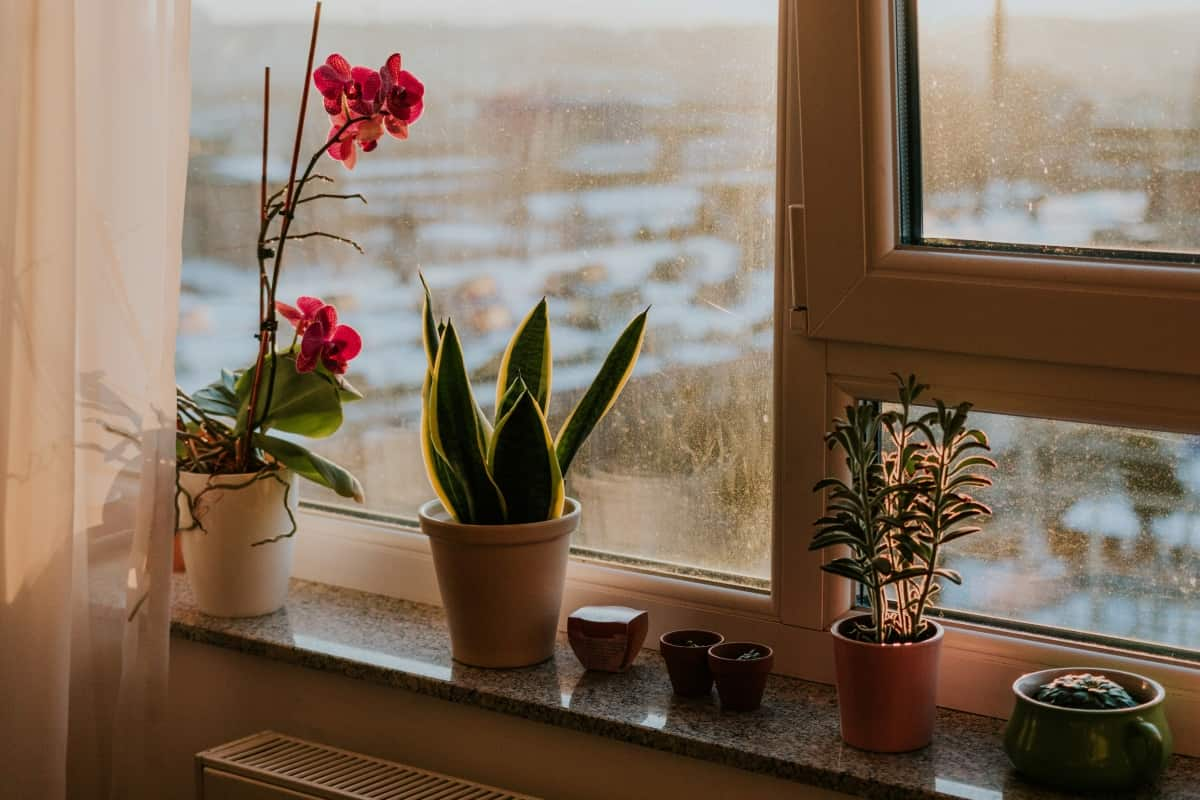
From adjusting watering schedules and maximizing available light to managing humidity levels and preventing pest infestations, we’ll cover it all. With these strategies, you’ll be equipped to keep your indoor plants healthy and thriving throughout the chilly winter months.
How to Protect Indoor Plants in Winter
Understanding the Winter Environment
During winter, the outdoor environment experiences lower temperatures, reduced sunlight, and drier air. These factors can directly impact indoor plants, as the outdoor conditions influence the indoor environment. Understanding the changes that occur during winter is crucial for providing appropriate care to your indoor plants.
Assessing Your Indoor Environment
Before implementing winter care strategies, it’s essential to assess your indoor environment. Factors such as temperature, humidity levels, air circulation, and available light play a significant role in the health of your plants. By understanding the conditions within your home, you can decide how to protect your indoor plants during the winter.
Identifying Cold Drafts and Hot Spots
Cold drafts and hot spots can have adverse effects on indoor plants. It’s important to identify areas in your home where cold drafts may occur, such as near windows, doors, or vents. Similarly, hot spots caused by heating systems or direct sunlight can also harm plants. By locating these areas, you can take steps to protect plants from extreme temperature fluctuations.
Lighting Adjustments for Shorter Days
With shorter daylight hours during winter, it’s crucial to make lighting adjustments for your indoor plants. Natural light is essential for their growth and development. Place your plants near windows to maximize their exposure to natural light. Additionally, consider supplementing with grow lights to provide adequate light intensity and duration.
In case you missed it: How To Protect Tulsi in Winter Season in the USA: From Dying, Indoor Care, and Outdoor Care
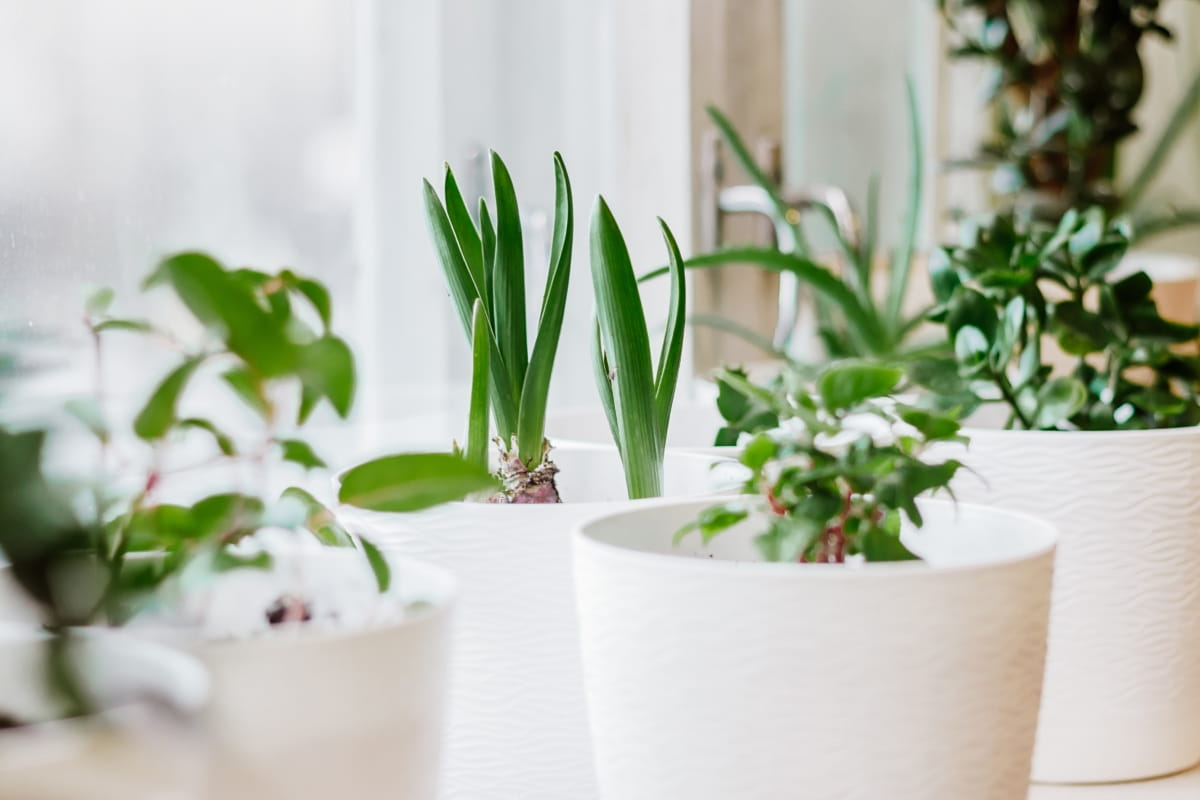
Maximizing Natural Light
Maximizing natural light is key to ensuring the health of your indoor plants during winter. Place your plants in areas that receive the most sunlight, such as south-facing windows. Rotate them periodically to ensure even light distribution. Keep in mind that different plant species have varying light requirements, so research the specific needs of your plants.
Supplementing with Grow Lights
In situations where natural light is limited, supplementing with grow lights can be beneficial. LED grow lights are energy-efficient and provide the necessary light spectrum for plant growth. Position the lights appropriate distance from the plants to avoid heat damage. Use timers to ensure consistent light exposure and mimic natural day-night cycles.
Maintaining Proper Humidity Levels
The dry indoor air during winter can negatively impact the health of your indoor plants. Maintaining proper humidity levels is crucial to prevent issues such as leaf dryness, wilting, and increased susceptibility to pests. There are several methods to increase humidity, including grouping plants, using humidifiers, and utilizing pebble trays filled with water.
Grouping Plants for Humidity
Grouping plants is an effective way to increase humidity levels around them. As plants transpire, they release moisture into the air, creating a microclimate of higher humidity. By placing plants in close proximity, you can create a humid environment that benefits all the plants in the group.
Using Humidifiers and Pebble Trays
Humidifiers are devices used to water vapor into the air, increasing humidity levels in the room. They are particularly useful in dry winter environments. Place humidifiers near your indoor plants to provide them with the necessary moisture. Additionally, using pebble trays filled with water can create localized humidity around individual plants.
In case you missed it: Top 20 Ways to Prepare Your Garden for Winter: Getting Ready For Cold Season Crops
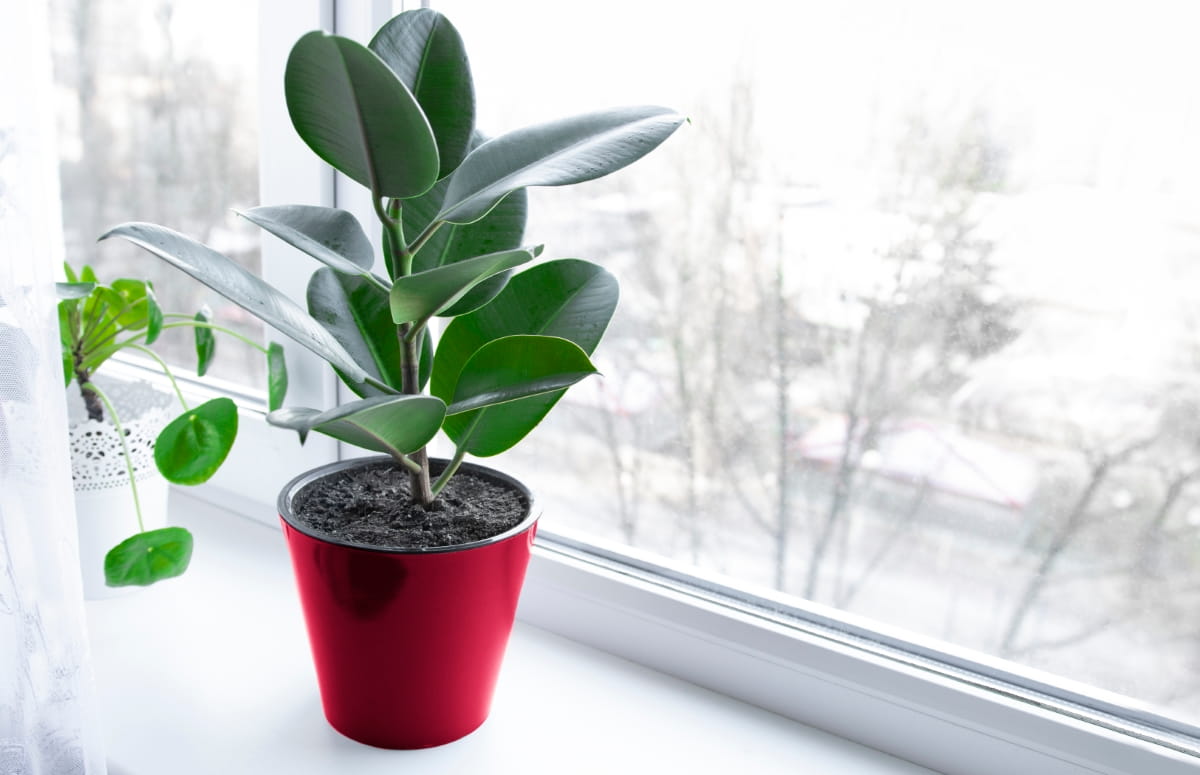
Watering Wisely During Winter
Adjusting watering schedules is crucial for the health of indoor plants during winter. Reduced growth and evaporation rates mean that plants require less water. Rotten roots and other problems might result from overwatering. Check the soil’s moisture content and provide water only when required. Before rewetting, let the top inch of soil dry off.
Adjusting Watering Schedules
During winter, it’s important to adjust your watering schedules to accommodate the reduced water needs of indoor plants. Using your finger, probe the soil to determine its moisture content. Water only until the soil feels dry, about one inch down. Steer clear of overwatering since this may result in fungal illnesses and root rot.
Monitoring Soil Moisture
Regularly monitoring soil moisture is essential for maintaining the health of your indoor plants during winter. To determine the moisture level of the soil, use a moisture meter, stick your finger into it. Keep in mind that various plant species need different amounts of water, therefore it’s critical to know what your particular plants require.
Temperature Control for Plant Health
Maintaining appropriate temperature levels for the health and well-being of indoor plants during winter. Extreme temperatures both hot and cold, can cause stress and damage to plants. Understanding the ideal temperature ranges and avoiding temperature extremes is key to ensuring their survival and growth.
Ideal Temperature Ranges
Most indoor plants thrive in temperatures between 60-75°F (15 and 24°C). However, different plant species have specific temperature preferences, so it’s important to research the ideal temperature range for each plant. Avoid exposing your plants to temperatures below 50°F (10°C) or above 85°F (29°C), as these extremes can be detrimental to their health.
Avoiding Temperature Extremes
Extreme temperatures whether hot or cold, can have adverse effects on indoor plants. Avoid placing your plants near drafty windows, doors, or vents, as these can expose them to cold drafts. Similarly, keep them away from heat sources such as radiators or heating vents, as excessive heat can cause wilting and other issues.
Fertilizing Through the Winter Months
Fertilizing indoor plants during winter requires a different approach than other seasons. Most plants experience a period of dormancy during winter when their growth slows down, requiring less fertilizer. Reduce the frequency of fertilization to once every two to three months using a diluted, balanced fertilizer.
Reducing Fertilizer Use
Because of their slower development, indoor plants need less nutrients throughout the winter. In order to avoid overfertilization, which may cause salt to accumulate in the soil and harm plants’ roots, it’s critical to apply less fertilizer. For accurate dilution and application, refer to the fertilizer package directions.
Understanding Plant Dormancy
Plant dormancy is a natural process during winter, characterized by reduced growth and metabolic activity. Understanding plant dormancy is crucial for providing appropriate care during this period. Avoid repotting or pruning plants during dormancy, as it can disrupt their natural resting phase.
In case you missed it: 15 Cover Crops for Raised Beds: When to Plant, Best Winter and No-till Cover Crops
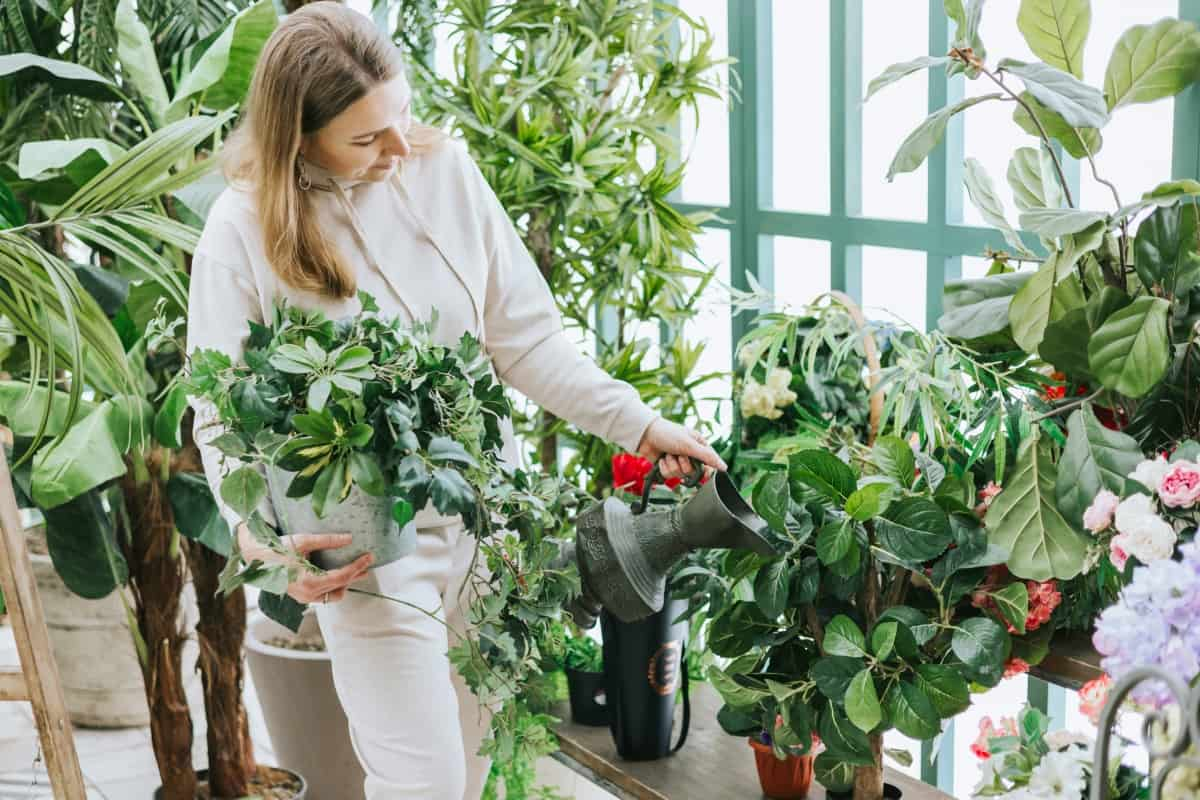
Repotting and Pruning Considerations
Winter is generally not the ideal time for repotting or pruning indoor plants, as they are in a dormant phase. However, if repotting or pruning is necessary, choose a mild day to minimize stress on the plants. Use fresh potting soil and ensure the new pot provides adequate drainage.
Timing for Winter Care Activities
Timing is important when it comes to winter care activities for indoor plants. Some tasks, such as repotting and pruning, are best done during the active growth phase in spring or early summer. However, tasks like adjusting lighting, monitoring humidity, and controlling temperature can be done throughout the winter months.
Preparing Plants for Spring Growth
Winter care sets the stage for your indoor plants’ upcoming spring growth. As the days start to lengthen and temperatures gradually rise, it’s important to prepare your plants for the transition. Gradually increase care by adjusting watering, fertilizing, and providing more light to support their growth and development.
Protecting Plants from Pests
In the winter, pests may still be a hazard to indoor plants. Check your plants often for pest evidence, such as mealybugs, aphids, or spider mites. Use insecticidal soaps or organic pest control techniques as soon as an infestation is discovered. The secret to avoiding bug infestations is to keep your surroundings tidy and hygienic.
Winter Pest Surveillance
Vigilance is important when it comes to pest surveillance during winter. Inspect plants regularly for signs of pests, such as webbing, sticky residue, or distorted leaves. Pay close attention to the undersides of leaves and the junctions between stems and leaves, as pests often hide in these areas.
Natural Pest Control Methods
Using natural pest control methods for a safe, effective way to protect indoor plants from pests during winter. Options include:
- Introducing beneficial insects, like ladybugs, predatory mites.
- Use neem oil or insecticidal soaps.
- Practicing good hygiene by removing fallen leaves or debris that can harbor pests.
Special Care for Tropical Plants
Tropical plants require special care during winter, as they are adapted to warm and humid environments. Mimicking tropical conditions is crucial for their survival. Please provide them with higher humidity levels, warm temperatures, and bright light. Consider using a humidifier, misting the leaves to maintain the necessary humidity.
Mimicking Tropical Conditions
Mimicking tropical conditions is essential for the well-being of tropical plants during winter. Increase humidity levels by using a humidifier and placing the plants on trays water and pebbles. Maintain temperatures between 70-80°F (21-27°C) and provide bright, indirect light to mimic their natural habitat.
Winter Care Tips for Sensitive Species
Some plant species are more sensitive to winter conditions and require extra care. Research the specific needs of your sensitive plants and provide them with the necessary conditions to thrive. This may include adjusting temperature and humidity levels, providing extra insulation, or using specialized lighting.
Managing Air Circulation
Proper air circulation is important for the overall health of indoor plants during winter. While it’s essential to provide fresh air, it’s equally important to avoid stagnant conditions and excessive drafts that can harm your plants. Managing air circulation involves finding the right balance to ensure a healthy environment for your indoor plants.
In case you missed it: Gardening Tips for Beginners: At Home, in Pots/Containers, Indoors, On Terrace for Vegetables, Flowers, Fruits, and Herbs
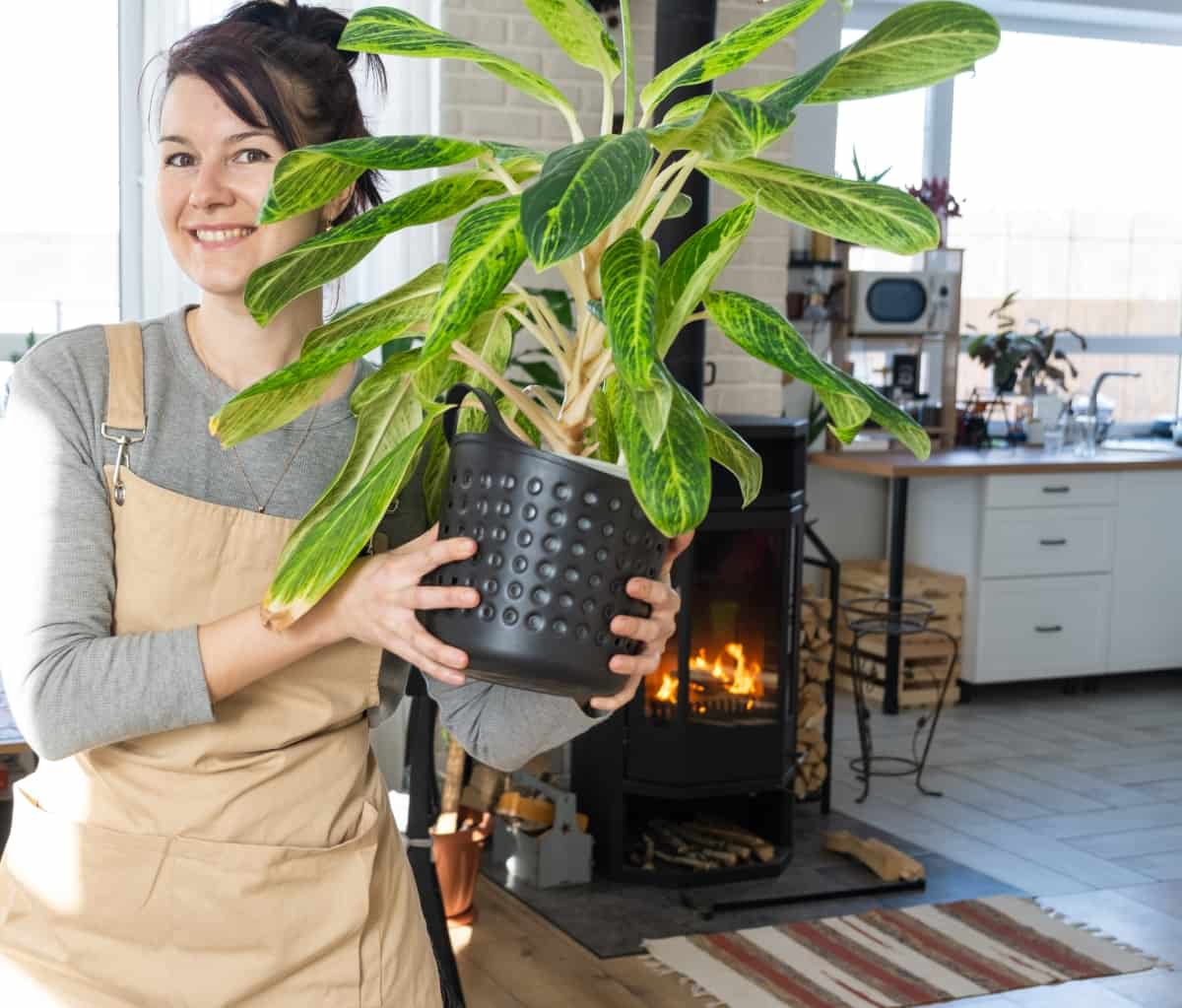
Importance of Fresh Air
Indoor plants benefit from fresh air, even during winter. Opening windows periodically allow for the exchange of air, helping to remove stale air and toxins. Providing fresh air also helps prevent the buildup of moisture, which can fungal diseases. However, be cautious of exposing plants to cold drafts when opening windows.
Avoiding Stagnant Conditions
Stagnant air leads to issues such as mold, fungus, and poor plant growth. To avoid stagnant conditions, ensure proper air circulation in the room. Use fans to gently circulate the air around your indoor plants, but avoid placing them directly in front of fans, as this can cause excessive drying of the foliage.
Utilizing Thermal Curtains and Windows
Thermal curtains and window coverings can help insulate your indoor plants from cold drafts and temperature fluctuations. They provide an extra layer of protection, reducing heat loss through windows and preventing cold air from infiltrating the room. Utilize them at night or when the temperature drops significantly.
Insulating Plants from Cold
Insulating your plants from the cold is crucial for their survival during winter. Use materials such as bubble wrap, fleece, or horticultural fleece to create protective barriers around your plants. This insulation helps retain heat and provides an extra layer of protection against frost and freezing temperatures.
Balancing Light and Temperature
Maintaining a balance between light and temperature is essential for the well-being of your indoor plants during winter. While light is important for photosynthesis and growth, excessive heat can be detrimental. Position your plants in areas that receive adequate light without exposing them to extreme temperature fluctuations.
Caring for Succulents and Cacti in Winter
Succulents and cacti have specific care requirements during winter due to their ability to store water. These plants are adapted to arid conditions and can tolerate lower temperatures. However, they still require proper light and careful watering. Adjust their care routine to accommodate their dormancy period and reduce watering frequency.
Winter Rest Period
Many indoor plants, including succulents and cacti, undergo a rest period during winter. This period is characterized by slower growth and reduced water and nutrient requirements. Allow your plants to rest by decreasing watering and avoiding fertilization. This rest period is essential for their overall health and prepares them for the upcoming growing season.
Water and Light Requirements
During the winter rest period, succulents and cacti require less water. Water sparingly and only when the soil is completely dry. Additionally, provide bright, indirect light to maintain their color and prevent etiolation. Adjust the placement of your succulents and cacti to ensure they receive adequate light during the shorter winter days.
Monitoring Plant Health
Regularly monitoring the health of your indoor plants is crucial during winter. Pay attention to any signs of stress, such as wilting, yellowing leaves, or stunted growth. Check for pests, diseases and address any issues promptly. By being proactive and observant, you can prevent problems from escalating and ensure the well-being of your plants.
In case you missed it: Top 25 Flowering Plants that Bloom in Winter
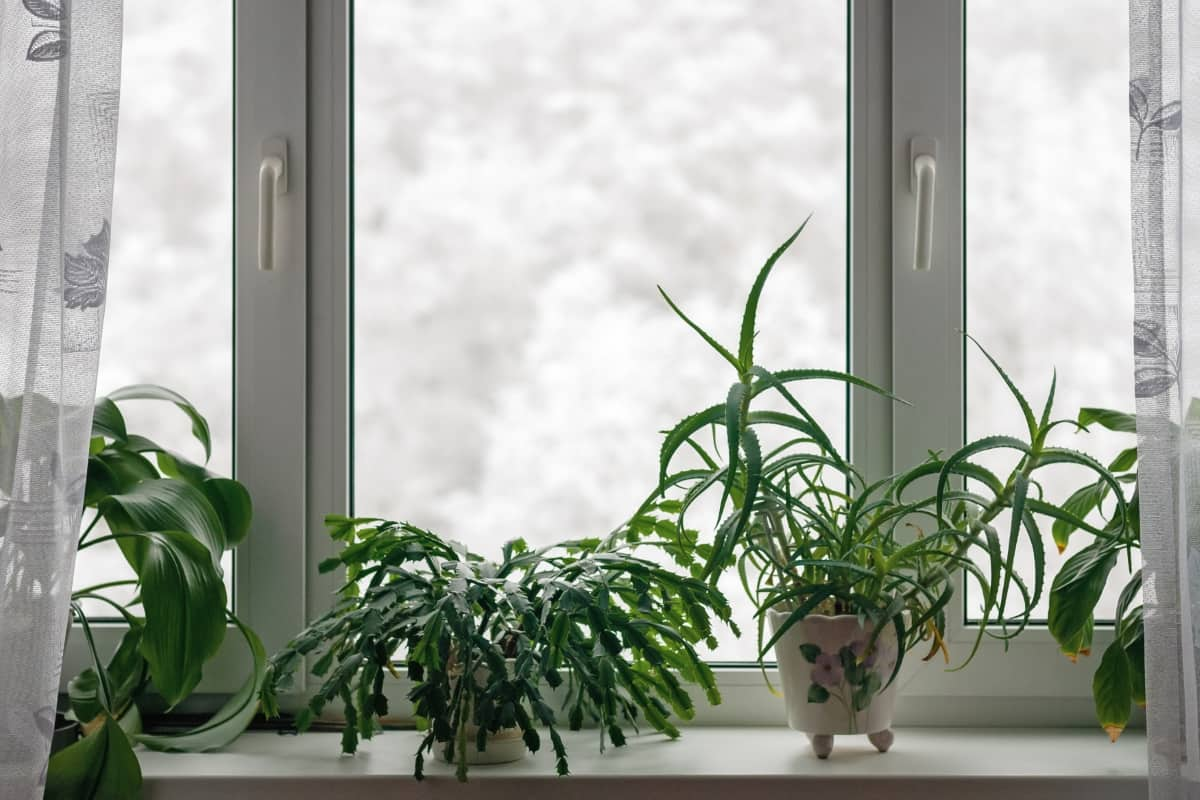
Signs of Stress in Plants
Indoor plants can exhibit various signs of stress during winter. These signs may include wilting, yellowing, or browning leaves, leaf drop, stunted growth, or molds and fungal diseases. Stress caused by factors such as improper watering, inadequate light, temperature extremes, or pest infestations. Identifying, addressing the underlying cause is crucial for restoring the health of your plants.
Gradually Increasing Care
When transitioning your indoor plants into spring, it’s important to increase care gradually. Avoid sudden changes in watering, fertilizing, or light exposure, as this can shock the plants and lead to stress. Slowly acclimate them to the increased care requirements to ensure a smooth transition.
Preparing for Active Growth
As your indoor plants transition into spring, they will enter a phase of active growth. This is the time to provide optimal conditions, including proper watering, adequate light, and regular fertilization. Monitor the growth of your plants, prune if necessary, and address any issues promptly to promote healthy and vigorous growth.
Winter Care Checklist
To help you stay organized and ensure thorough winter care for your indoor plants, use a winter care checklist. Include tasks such as adjusting watering schedules, monitoring humidity levels, controlling temperature, inspecting for pests, adjusting lighting, and planning for repotting or pruning in the checklist. This will help you keep track of essential tasks and ensure comprehensive care for your plants.
Weekly and Monthly Care Points
To maintain the health of indoor plants during winter, establish a weekly and monthly care routine. This routine may include tasks such as checking soil moisture, adjusting watering as needed, inspecting for pests, rotating plants for even growth, cleaning leaves, and monitoring temperature and humidity levels. Consistency and regularity in care will contribute to the overall well-being of your plants.
Planning for Seasonal Changes
As you care for your indoor plants during winter, it’s important to plan for seasonal changes. Consider your plants’ needs and anticipate how their care requirements may change as spring approaches. By planning, you can provide the necessary care and create a smooth transition for your indoor plants.
Conclusion
Safeguarding indoor plants during winter is essential for their well-being. By implementing proper winter care practices, such as adjusting light, humidity, watering, and temperature, you can help your plants thrive despite the challenges of the season.
- Types of Pesticides Used in Agriculture: A Beginner’s Guide
- Economical Aquaculture: A Guide to Low-Budget Fish Farming
- 15 Common Planting Errors That Can Doom Your Fruit Trees
- How to Make Houseplants Bushy: Effective Tips and Ideas
- Innovative Strategies for Boosting Coconut Pollination and Yield
- Pollination Strategies for Maximum Pumpkin Yield
- The Complete Guide to Chicken Fattening: Strategies for Maximum Growth
- Natural Solutions for Tulip Problems: 100% Effective Remedies for Leaf and Bulb-Related Issues
- Revolutionizing Citrus Preservation: Towards a Healthier, Greener Future
- Natural Solutions for Peony Leaf and Flower Problems: 100% Effective Remedies
- Maximizing Profits with Avocado Contract Farming in India: A Comprehensive Guide
- Natural Solutions for Hydrangea Problems: 100% Effective Remedies for Leaf and Flowers
- The Ultimate Guide to Choosing the Perfect Foliage Friend: Bringing Life Indoors
- From Sunlight to Sustainability: 15 Ways to Use Solar Technology in Agriculture
- The Ultimate Guide to Dong Tao Chicken: Exploring from History to Raising
- The Eco-Friendly Makeover: How to Convert Your Unused Swimming Pool into a Fish Pond
- Mastering the Art of Delaware Chicken Farming: Essentials for Healthy Backyard Flocks
- 20 Best Homemade Fertilizers for Money Plant: DIY Recipes and Application Methods
- How to Craft a Comprehensive Free-Range Chicken Farming Business Plan
- Brighten Your Flock: Raising Easter Egger Chickens for Beauty and Bounty
- How to Optimize Your Poultry Egg Farm Business Plan with These Strategies
- Subsidy for Spirulina Cultivation: How Indian Government Schemes Encouraging Spirulina Farmers
- Ultimate Guide to Raising Dominique Chickens: Breeding, Feeding, Egg-Production, and Care
- Mastering the Art of Raising Jersey Giant Chickens: Care, Feeding, and More
- Ultimate Guide to Raising Legbar Chickens: Breeding, Farming Practices, Diet, Egg-Production
- How to Raise Welsummer Chickens: A Comprehensive Guide for Beginners
- How to Protect Indoor Plants in Winter: A Comprehensive Guide
- Ultimate Guide to Grow Bag Gardening: Tips, Tricks, and Planting Ideas for Urban Gardeners
- Guide to Lotus Cultivation: How to Propagate, Plant, Grow, Care, Cost, and Profit
- Agriculture Drone Subsidy Scheme: Government Kisan Subsidy, License, and How to Apply Online
- Ultimate Guide to Raising Araucana Chickens: Breed Profile, Farming Economics, Diet, and Care
- Bringing Hydroponics to Classroom: Importance, Benefits of Learning for School Students
- Ultimate Guide to Raising Polish Chickens: Breed Profile, Farming Economics, Diet, and Care
- Ultimate Guide to Raising Australorp Chickens: Profile, Farming Economics, Egg Production, Diet, and Care
- Silkie Chicken Farming: Raising Practices, Varieties, Egg Production, Diet, and Care
- Sussex Chicken Farming: Raising Practices, Varieties, Egg Production, Diet and Care